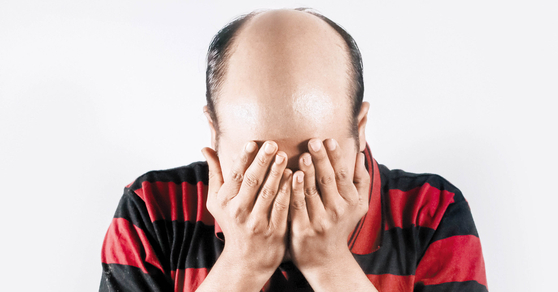![[중앙포토]](https://i0.wp.com/pds.joins.com/news/component/htmlphoto_mmdata/202102/24/1222674c-bd91-4326-9fea-f7ff6f6c6fea.jpg?w=560&ssl=1)
[중앙포토]
250 million vs 10 million.
This is the number of people in China and Korea who are concerned about hair loss, respectively. According to China’s National Hygiene and Health Commission, one-sixth of the total population is concerned about hair loss, and 80% of them are male. In China, statistics that add up the area (approximately 5900 ㎢) when it is said that all of them are in a state of complete hair loss are attracting attention from time to time. This is 10 times the area of Seoul (605㎢).
It has been argued that China should target the hair loss management market. On the 23rd, the Chengdu branch of the Korea International Trade Association published a report on the status and implications of the Chinese hair loss industry and recommended an active entry into the Chinese market.
According to the Korea International Trade Association, hair loss (27%) was ranked 7th in health concerns in a survey conducted in China. It is the same level as the percentage of people who have eye health (27%). In particular, it is said that those born in the 80s, who are known to have a greater propensity to spend than the previous generation, account for 38.5% of hair loss people and 36% of those in the 90s. The number of patients undergoing hair transplantation was the 90s, accounting for 57% of the total.
![[자료 한국무역협회]](https://i0.wp.com/pds.joins.com/news/component/htmlphoto_mmdata/202102/24/4a719d11-1172-4089-8b8c-30c968d1b2b0.jpg?w=560&ssl=1)
[자료 한국무역협회]
Ranked 5th in sales of herbal ingredients’Ryo’
How do the Chinese manage hair loss? The most common method is to use an anti-hair loss shampoo (69%). Diet (68%), ginger juice sprinkling (49%), and applying hair growth (41%). China’s hair loss prevention shampoo market is growing at an annual average of 13%. The market size this year is expected to be 1.6 billion yuan (about 270 billion won).
Korean companies are also jumping into the hair loss prevention shampoo market. According to a martial arts survey, AMOREPACIFIC’s’Ryo’ shampoo is ranked 5th in sales volume (by amount) in Taobao and Tmall, Chinese shopping malls. Amore official said, “In China, it has been promoted as a product that is good for overall scalp and hair texture management, but because of the fact that it contains herbal medicinal ingredients, many Chinese consumers are also looking for it for preventing hair loss.” Amore is aiming to expand its market share by reinforcing marketing inviting Chinese social media influencers such as WeChat.
It was found that there are no Korean products that are ranked at the top in the applying hair growth liquid market. In this market, Chinese-made’Pawang’ products are ranked first, and France’s L’Oreal (6th) and Japan’s Shiseido (8th) are also on the top.
![Rescholton's No. 1 hair loss treatment device sales in China. [사진 레스콜튼 홈페이지]](https://i0.wp.com/pds.joins.com/news/component/htmlphoto_mmdata/202102/24/2349d781-c06b-471e-97e2-c99b22894eda.jpg?w=560&ssl=1)
Rescholton’s No. 1 hair loss treatment device sales in China. [사진 레스콜튼 홈페이지]
“A reasonable price product is advantageous”
Hair growth treatment aids in the form of hats or combs that shoot LED light are sold most by Rescholton products in the United States. The price is about 2299 yuan (400,000 won). The Korean company Wontech’s product was branded’Ulike’ and was named as the 7th most-selling treatment aid. At 8,719 yuan (1.5 million won), the price is more expensive than US or Japanese cos beauty products (450,000 won).
LG Electronics launched’Prael Medi Hair’ (equivalent to 1.99 million won) last October, and there is no export volume yet. IL Science’s’Polynik’, which is targeting domestic TV home shopping users, is also considering entering the overseas market in the mid to long term. A martial arts official analyzed, “If you develop creative and popular products at reasonable prices based on Korean technology, it will be advantageous for entering China.”
Kim Hee-young, head of the Qingdao branch of the Korea Trade Association, said, “Especially those born in the 90s, who account for more than a third of the hair loss population, are the largest consumer group willing to spend money if they are highly interested in appearance and have excellent efficacy. ) And various product lines and services, it is worth trying to enter China.”
Reporter Sunwook Choi [email protected]
